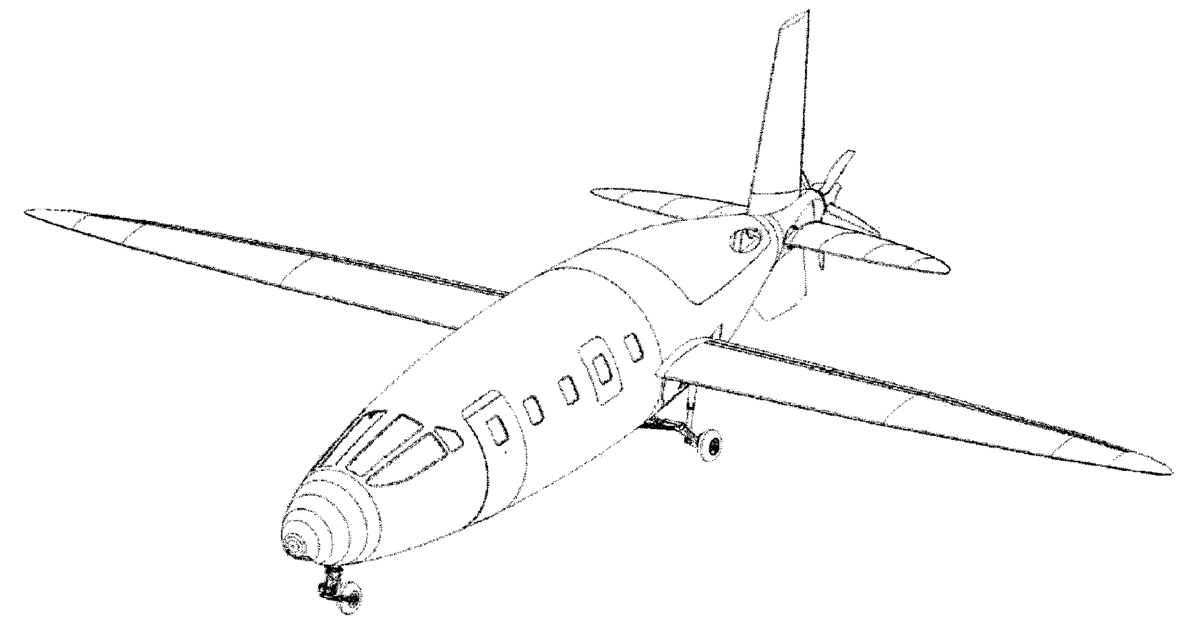A while back, there was a discussion about the fastest a propeller plane could go, and someone included this study of a hypothetical air racer that could potentially go faster than the fastest existing unlimited racers on a little over 2,000 HP.
The strange thing about the design is that it uses a propeller mounted in the fuselage in FRONT of the tail empennage. I can't figure out a practical way to build such a structure. Either it would need structure that runs INSIDE the propshaft (I have seen some designs for front propellers with non-rotating noses that use that), or maybe a "ring" bearing, driven by a planetary gearbox where the structure runs in between the planetary gears (which would be a nightmare to design and I can't think of any precedent). Any other design would have to pass through the plane of the spinning prop.
Is there any other way to execute such a design? I'm starting to think this was an interesting aerodynamic study by people who gave no thought to how one would actually mechanically execute the design. They criticize Pond Racer, but Pond Racer was infinitely more practical than this.
The strange thing about the design is that it uses a propeller mounted in the fuselage in FRONT of the tail empennage. I can't figure out a practical way to build such a structure. Either it would need structure that runs INSIDE the propshaft (I have seen some designs for front propellers with non-rotating noses that use that), or maybe a "ring" bearing, driven by a planetary gearbox where the structure runs in between the planetary gears (which would be a nightmare to design and I can't think of any precedent). Any other design would have to pass through the plane of the spinning prop.
Is there any other way to execute such a design? I'm starting to think this was an interesting aerodynamic study by people who gave no thought to how one would actually mechanically execute the design. They criticize Pond Racer, but Pond Racer was infinitely more practical than this.



Comment